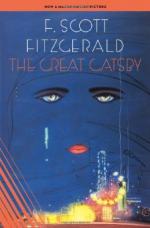|
This section contains 1,046 words (approx. 4 pages at 300 words per page) |

|
The 1920s from F. Scott Fitzgerald's Perspective
Summary: Discusses how American author F. Scott Fitzgerald depicted the 1920s culture through his novel, The Great Gatsby. Summarizes the novel and analyzes Fitzgerald's portrayal of women during the 1920s.
In F. Scott Fitzgerald's the Great Gatsby, the "old" Daisy symbolizes Gatsby's traditional American Dream. He needs her t o fulfill this dream that revolves around a family and money to support it. Tragically Gatsby fails to realize that Daisy as well as the American Dream has changed for the worse. The new culture of the 1920s worships money, alcohol, and sexuality and creates a conducive background for the "New Woman" eager to grab her share of the action. Like the "new" Daisy, Fitzgerald introduces Myrtle as an example of the typical "New Woman." In this passage describing a little party in Tom Buchanan and Myrtle Wilson's apartment, Fitzgerald reveals Myrtle as the archetypal gold digging mistress. Fitzgerald depicts the new woman as a mercenary on a quest for the American Dream.
Myrtle's obsession with appearance and money demonstrates how the new consumer-oriented economy redefines the American Dream...
|
This section contains 1,046 words (approx. 4 pages at 300 words per page) |

|


